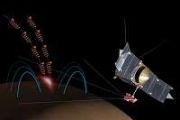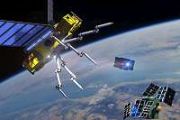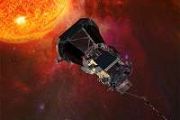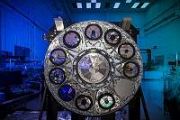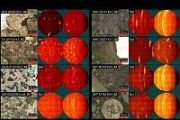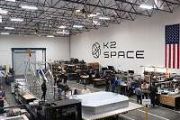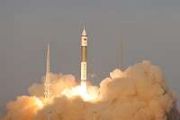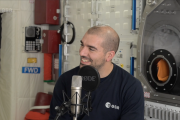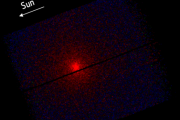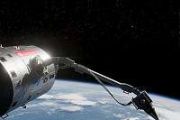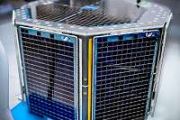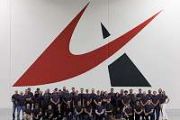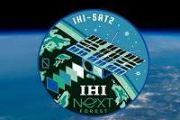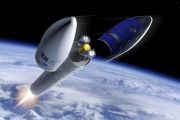
Copernical Team
Hurricane Helene's atmospheric waves captured by NASA's new AWE mission
 On Sept. 26, 2024, as Hurricane Helene struck Florida's Gulf Coast with powerful storm surges and severe impacts, NASA's Atmospheric Waves Experiment (AWE) captured unprecedented data on the atmospheric disturbances it generated. Located about 55 miles above Earth, these disturbances, known as atmospheric gravity waves, were recorded as immense ripples through the upper atmosphere, offering valu
On Sept. 26, 2024, as Hurricane Helene struck Florida's Gulf Coast with powerful storm surges and severe impacts, NASA's Atmospheric Waves Experiment (AWE) captured unprecedented data on the atmospheric disturbances it generated. Located about 55 miles above Earth, these disturbances, known as atmospheric gravity waves, were recorded as immense ripples through the upper atmosphere, offering valu Paradigm Shift in Science: From Big Data to Autonomous Robot Scientists
 In a recent study led by Professor Xin Li and Dr. Yanlong Guo of the Institute of Tibetan Plateau Research, Chinese Academy of Sciences, researchers analyze how scientific research is evolving through the power of big data and artificial intelligence (AI). The paper discusses how the traditional "correlation supersedes causation" model is being increasingly challenged by new "data-intensive scie
In a recent study led by Professor Xin Li and Dr. Yanlong Guo of the Institute of Tibetan Plateau Research, Chinese Academy of Sciences, researchers analyze how scientific research is evolving through the power of big data and artificial intelligence (AI). The paper discusses how the traditional "correlation supersedes causation" model is being increasingly challenged by new "data-intensive scie CHAPPIE: An innovative advancement in CBRN defense
 Buckley Space Force Base is home to one of the Defense Department's only two chemical, biological, radiological and nuclear quadrupedal unmanned ground vehicles.
"You spend enough time around him and start to forget he's a QUGV," said U.S. Air Force Master Sgt. Dominic Garcia, Installation Office of Emergency Management section chief. Garcia refers to this innovative QUGV, affectionately k
Buckley Space Force Base is home to one of the Defense Department's only two chemical, biological, radiological and nuclear quadrupedal unmanned ground vehicles.
"You spend enough time around him and start to forget he's a QUGV," said U.S. Air Force Master Sgt. Dominic Garcia, Installation Office of Emergency Management section chief. Garcia refers to this innovative QUGV, affectionately k Proba-3 to continuously monitor Sun's energy output
 Proba-3's ambitious mission requires more than one spacecraft to achieve its objectives. To enable the Coronagraph spacecraft to study the Sun's outer atmosphere, the Occulter spacecraft must block the solar disk. This setup places the Occulter in continuous solar alignment, making it an invaluable scientific platform.
The Occulter is equipped with the Davos Absolute Radiometer (DARA), a c
Proba-3's ambitious mission requires more than one spacecraft to achieve its objectives. To enable the Coronagraph spacecraft to study the Sun's outer atmosphere, the Occulter spacecraft must block the solar disk. This setup places the Occulter in continuous solar alignment, making it an invaluable scientific platform.
The Occulter is equipped with the Davos Absolute Radiometer (DARA), a c Fugro supports debut of Lunar Terrain Vehicle prototype
 Earlier this year, Fugro Australia's Space Automation, AI, and Robotics Control Complex (SpAARC) entered into a partnership with U.S. space exploration company Intuitive Machines to aid their phase 1 feasibility contract with NASA for a Lunar Terrain Vehicle (LTV). On Friday, JSC's Space Centre Houston, hosted the unveiling of the first prototype, named Moon RACER.
Fugro, known for its exp
Earlier this year, Fugro Australia's Space Automation, AI, and Robotics Control Complex (SpAARC) entered into a partnership with U.S. space exploration company Intuitive Machines to aid their phase 1 feasibility contract with NASA for a Lunar Terrain Vehicle (LTV). On Friday, JSC's Space Centre Houston, hosted the unveiling of the first prototype, named Moon RACER.
Fugro, known for its exp GMV completes FASTNAV project advancing lunar rover capabilities
 GMV, a multinational technology company, has concluded the FASTNAV (Multi-range Navigation for Fast Moon Rovers) project, showcasing a navigation system that enables rovers to reach speeds of 1 m/s-unprecedented for autonomous vehicles on planetary surfaces. Funded by the European Space Agency (ESA) under its General Support Technology Program (GSTP) and supported by the UK Space Agency (UKSA),
GMV, a multinational technology company, has concluded the FASTNAV (Multi-range Navigation for Fast Moon Rovers) project, showcasing a navigation system that enables rovers to reach speeds of 1 m/s-unprecedented for autonomous vehicles on planetary surfaces. Funded by the European Space Agency (ESA) under its General Support Technology Program (GSTP) and supported by the UK Space Agency (UKSA), NASA SpaceX Crew-8 astronauts to speak publicly for first time since return
 The three NASA astronauts that were part of the SpaceX Crew-8 aboard Crew Dragon Endeavour will speak publicly today for the first time since their mission returned to earth late last month.
Astronauts Michael Barratt, Matthew Dominick, and Jeanette Epps will speak and take questions at a news conference at NASA's Johnson Space Center in Houston, Texas, starting at 3:15 p.m. EST, the ag
The three NASA astronauts that were part of the SpaceX Crew-8 aboard Crew Dragon Endeavour will speak publicly today for the first time since their mission returned to earth late last month.
Astronauts Michael Barratt, Matthew Dominick, and Jeanette Epps will speak and take questions at a news conference at NASA's Johnson Space Center in Houston, Texas, starting at 3:15 p.m. EST, the ag Dragon executes first successful reboost for Space Station
 NASA and SpaceX observed a significant milestone as SpaceX's Dragon spacecraft successfully demonstrated its ability to reboost the International Space Station's orbit on Friday at 12:50 p.m. EST. Using its Draco thrusters, the spacecraft adjusted the station's altitude, raising it by 7/100 of a mile at apogee and 7/10 of a mile at perigee over a 12-minute and 30-second operation.
This suc
NASA and SpaceX observed a significant milestone as SpaceX's Dragon spacecraft successfully demonstrated its ability to reboost the International Space Station's orbit on Friday at 12:50 p.m. EST. Using its Draco thrusters, the spacecraft adjusted the station's altitude, raising it by 7/100 of a mile at apogee and 7/10 of a mile at perigee over a 12-minute and 30-second operation.
This suc Hera initiates journey to mars with key deep-space burn
 ESA's Hera mission has completed its first major trajectory correction since its October 7 launch, positioning it for a vital Mars gravity assist scheduled for March 2025.
On October 23, Hera's trio of orbital control thrusters operated for 100 minutes, altering its speed by roughly 146 m/s. A secondary 13-minute burn on November 6 added an estimated 20 m/s, ensuring the spacecraft stays o
ESA's Hera mission has completed its first major trajectory correction since its October 7 launch, positioning it for a vital Mars gravity assist scheduled for March 2025.
On October 23, Hera's trio of orbital control thrusters operated for 100 minutes, altering its speed by roughly 146 m/s. A secondary 13-minute burn on November 6 added an estimated 20 m/s, ensuring the spacecraft stays o Ariane 6 set for first commercial flight in early 2025
 ArianeGroup, Arianespace, and their partners are gearing up for the second flight of the Ariane 6 launcher, following its successful inaugural launch on July 9. The upcoming mission marks the launcher's transition into commercial service.
Key milestones in preparation for this flight include:
+ The comprehensive analysis of data from the initial flight is complete, affirming Ariane 6
ArianeGroup, Arianespace, and their partners are gearing up for the second flight of the Ariane 6 launcher, following its successful inaugural launch on July 9. The upcoming mission marks the launcher's transition into commercial service.
Key milestones in preparation for this flight include:
+ The comprehensive analysis of data from the initial flight is complete, affirming Ariane 6 
